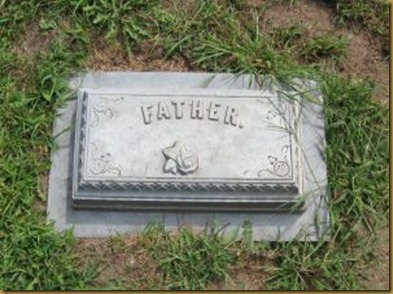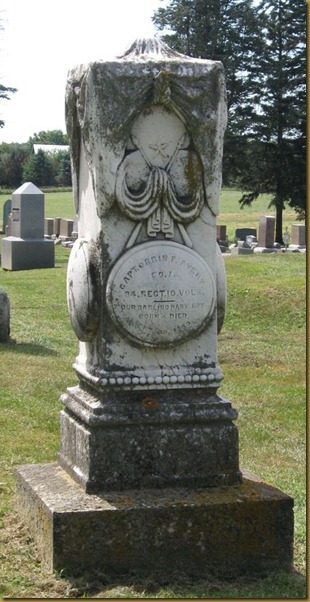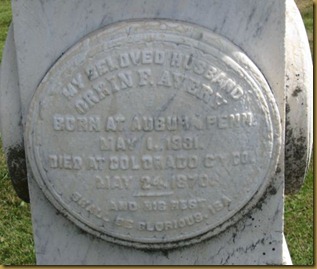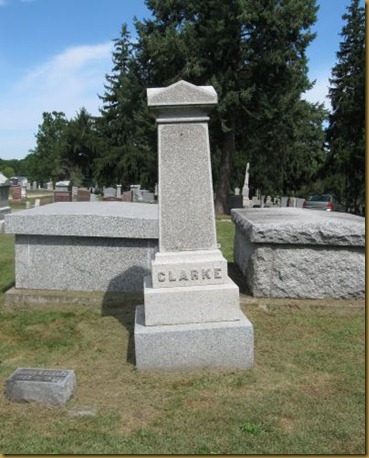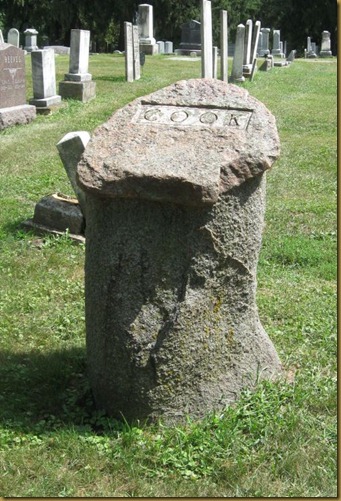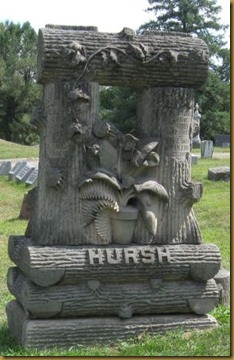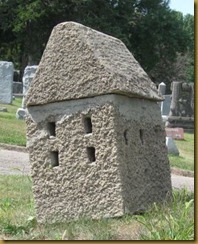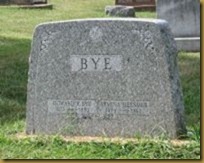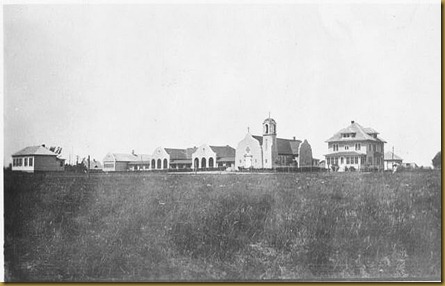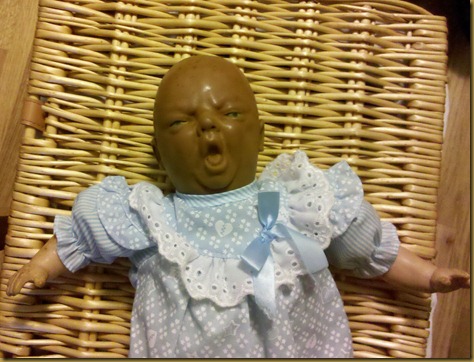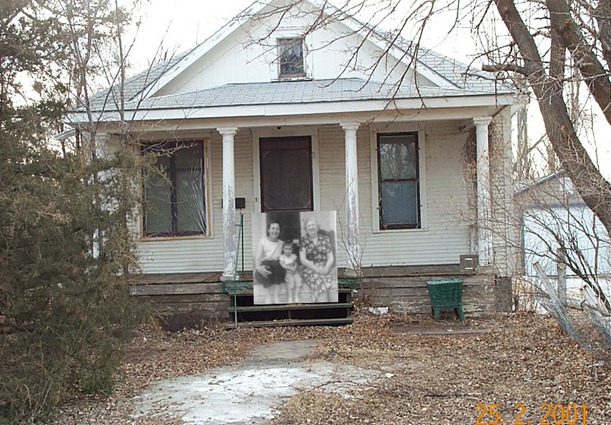While on a recent cemetery outing in Harlington Cemetery (Waverly, Iowa) I noticed several stones that were in remarkably good shape for their age. Actually, they were in remarkably good shape for any age! My husband, upon touching one of them, realized this was a metal “stone,” with a soft matte finish that mimicked the real thing. In the short time we were in the cemetery, we found three examples, all stamped inconspicuously with “Western White Bronze Company” of Des Moines, Iowa.
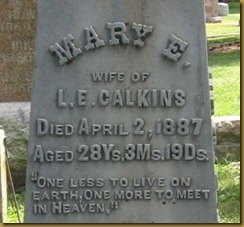
A family historian could only hope to find a 120 year old stone in such wonderful, clearly readable condition. The stone at right, belonging to members of the Jenkins and Calkins family, marks burials from 1887-1890.
According to an article written by
Mark Culver, these “White Bronze” tombstones are not bronze at all, but zinc, which is resistant to rust. The process of producing these “stones”, Culver says, was perfected in 1873. The metal pieces were produced and then fused together with hot zinc. The Monumental Bronze Company produced these stones until 1914, and during World War I, the government commandeered the plant for munitions. The production of grave markers stopped in 1939.
The Western White Bronze Company of Des Moines was a subsidiary of the Monumental Bronze Company, where finishing work was done after casting in Bridgeport, Connecticut. This plant closed in 1909.
Culver states that the prices of these grave markers ranged from under $10 to upwards of $5,000.
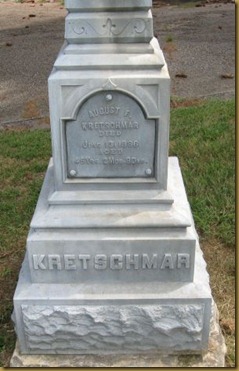
None of the stones we saw showed signs of damage, despite their age. The price seems right. The looks is crisp and clean. They don’t rust. They apparently don't age. Vandals cannot break pieces from them. So why did demand for the White Bronze stones cease?
The problem, says Culver, is that people never really warmed up to metal markers, and some cemeteries went so far as to ban them. Many people probably did not believe the claims of the salesmen, which, decades down the road, have proven true after all. Would they fare well in today’s market? I’ll bet they would.
